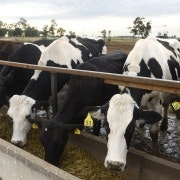After the furnace, a gleaming Newcrest
If the trends within Newcrest’s recent quarterly reports are maintained, Greg Robinson will have reason to be satisfied with the salvage job he’s directed at the big gold miner when he retires in the second half of this year.
Last year was a horrible one for Newcrest, and indeed the entire gold sector, as the continuing plunge in the gold price to, just before Christmas, its lowest levels for three years created havoc for gold producers. The gold price is close to 40 per cent of its peak after falling more than 20 per cent last year.
Newcrest’s woes were exacerbated by the controversies, and continuing investigation by the Australian Securities and Investments Commission, associated with its disclosure practices when it revealed $6.2 billion of writedowns and a 60 per cent plunge in earnings mid-year.
Robinson’s response to the radical changes in Newcrest’s environment has been to slash capital expenditures, carve into costs and shut down marginal production. With the group in a cashflow-negative position and carrying uncomfortable levels of debt the reaction had to be urgent.
In many respects the pressures that engulfed Newcrest and its peers are the same as those the entire resources sector is now responding to.
During the commodities boom they got used to high prices, allowing their costs to inflate in response to the competition for scarce labour and materials and bringing higher-cost resources into production. Everyone is now trying to strip costs and capital back out. Newcrest is targeting a near-halving of its capital expenditures this year, from nearly $2 billion to about $1 billion.
Newcrest is making a pretty good fist of it. Its writeoffs were announced mid-year. Its September quarter production report showed strong progress in getting its cash costs down and its average realised gold price up.
Today’s December quarter report shows the progress is continuing. Its gold production was 6 per cent higher than in the September quarter and its copper output 15 per cent higher. Its “all-in sustaining cost” for the quarter was $921 an ounce and at all its operations cash costs were below the average realised gold price of $1372 an ounce. In the September quarter the average realised price was $1442.
Newcrest said today that it was maintaining its guidance for the 2014 financial year, but gold production was now expected to be at the top of its guidance range and its cash costs at the lower end of the range. The ambition is to be cashflow positive at an Australian gold price of $1450 an ounce (about $US1283 an ounce). Gold traded overnight at just under around $US1240 an ounce.
An illustration of the type of progress the group is making was provided by its Cadia Valley mine in New South Wales.
While its production fell during the quarter – it produced 151,305 ounces of gold and 15,251 tonnes of copper compared with 154,232 ounces of gold and 15,148 tonnes of copper in the September quarter – its cash costs fell from $379 an ounce to $250 an ounce.
Newcrest, as it has at some of its other operations, has stopped processing low-grade stockpiles. That affects volumes – its mill throughput was 32 per cent lower – but average gold grades were up 39 per cent, recoveries up 6 per cent and costs 34 per cent lower.
When Newcrest’s chief operating officer Sandeep Biswas succeeds Robinson later this year the group ought to be in a far more stable and sustainable condition than it was six months ago.
The plunge in the gold price coincided with the tail end of a multi-billion dollar expansion program which has now tailed off quite dramatically.
The rate of change in both the nature of its production base and the level of its cost base and the option, if forced by another big step down in the gold price, of shutting down more higher-cost production means that Newcrest ought to be able to get through this year without having to conduct the emergency capital raising on distressed terms that the market anticipated last year.
While it still has the ASIC investigation and a potential class action hanging over it, the consistent progress the group made in the second half of 2013 and the rate at which it made it is providing increasing confidence that, subject to whatever might happen to the gold price, the worst is behind it.
















